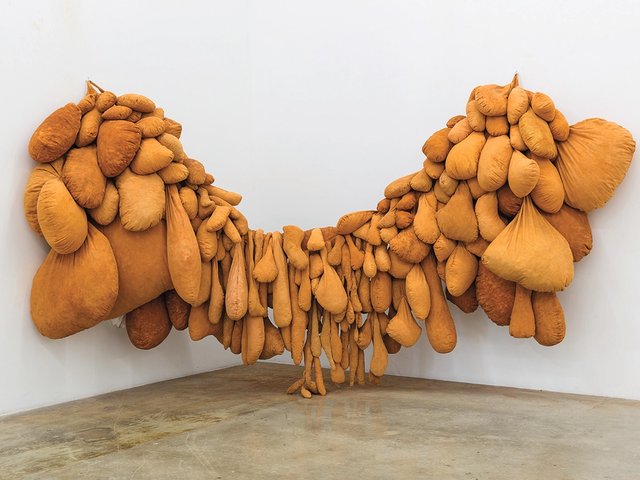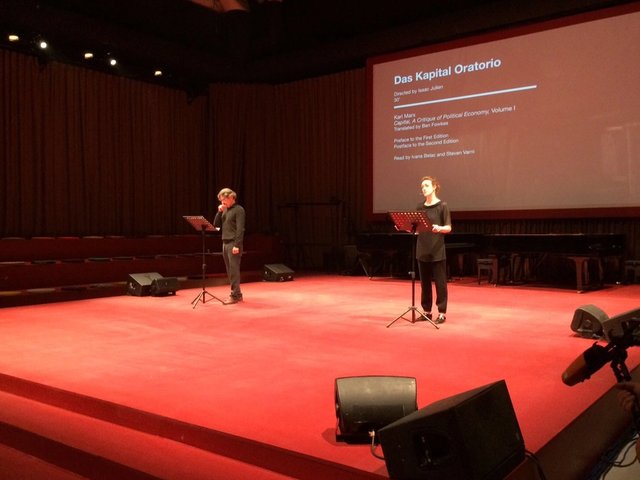The Venice Biennale is always notable and the impact of this year’s show felt massive. It features in my picks of the year, alongside diverse group shows and solo exhibitions. Much has been made of the immersive experience boom; but none moved me to include them here, except as the one stinker.
Venice Biennale: Stranieri Ovunque/Foreigners Everywhere
Adriano Pedrosa’s international exhibition was a magnum opus reflecting a life’s work. With more historical work than many Venice shows—in part correcting systemic geographical biases in previous Biennales—there was nonetheless a clear, consistent presentation of new developments, with queer, indigenous, “outsider” and émigré artists to the fore.
Zanele Muholi, Tate Modern, London
Reinvigorated after its Covid-shortened spell at Tate Modern, this retrospective confirmed Muholi’s devastating and defiant achievement in documenting queer Black life in South Africa. The vast central room featuring Somnyama Ngonyama was a magnificent reflection of one of the great contemporary exercises in self-portraiture.
Matisse: Invitation to the Voyage, Fondation Beyeler, Basel
A soaring 70-work survey, exploring the importance of travel to Matisse’s life and work.

Godfried Donkor’s St Bill Richmond, the black terror (2019) at the NPG in London
© Godfried Donkor; courtesy Gallery 1957 and Salim Zakhem
The Time is Always Now, National Portrait Gallery, London
Ekow Eshun’s gathering of 22 Black artists was a triumph. Eshun stressed that it was not triumphalist in marking the prominence of painting by Black artists. Still, it read as a greatest hits of recent contributions to the medium, with major works by Michael Armitage, Kerry James Marshall and Jennifer Packer among its many highlights.
Shahzia Sikander: Collective Behaviour, Palazzo Soranzo Van Axel, Venice
My pick of the collateral Venice Biennale shows. It combined the precise drawing and delicate colour of the Indo-Persian manuscript painting in which Sikander trained with more contemporary media and technologies. Her work explores feminism, post-colonialism and the climate emergency, while giving flight to a luminous vision and imagination.
Glenn Ligon: All over the Place, Fitzwilliam Museum, Cambridge
Invited to respond to Cambridge’s encyclopaedic museum, Ligon brought his clear vision and astute commentary. From neons with multiple translations of the Greek poet Constantine P. Cavafy on the façade, evoking the slipperiness of language around power and agency, to cheek-by-jowl flower paintings, both joyous and subtly alluding to extraction and historic global trade, Ligon’s interventions reframed the museum and its holdings with impact and nuance.
Acts of Resistance: Photography, Feminisms and the Art of Protest, South London Gallery
Acts of Resistance was an intersectional, continent-crossing survey of new developments in photography with a particular focus on political activism and precarious communities. It was by turns life-affirming and disquieting, and never less than enthralling.
Ellsworth Kelly, Fondation Louis Vuitton, Paris
A sonorous exhibition in the city where Kelly first found his artistic voice. Fittingly shown while Matisse’s Red Studio was in the galleries above, it showed how Kelly embraced multiple traditions in Europe with a reductive and seductive purity. He said he wanted “to get at the rapture of seeing”; this was rapturously beautiful.
The Imaginary Institution of India, Barbican Art Gallery, London
If push came to shove, my show of the year. With familiar voices like Bhupen Khakhar and Sheela Gowda alongside a host of artists who are revelatory to many of us, it was beautifully designed, immaculately paced and resonantly stirring.
THE TURKEY: The Butterfly Trail, Outernet, London
Outernet, the free, immersive space in central London, claimed in 2023 that it was the UK capital’s most visited attraction. In January, I ventured to see Pixel Artworks’s mixed-reality environment: a virtual glasshouse occupied by one Professor Peter Pelgrin, with butterflies that could land on your hand via an augmented reality app. It laudably attempted to raise awareness about species extinction, but clumsily, via a trope—Pelgrin, the “intrepid explorer”—symbolic of historical extractive practices. The visuals were confectionery-coloured to the point of sickliness. All round, an execrably gaudy spectacle.






